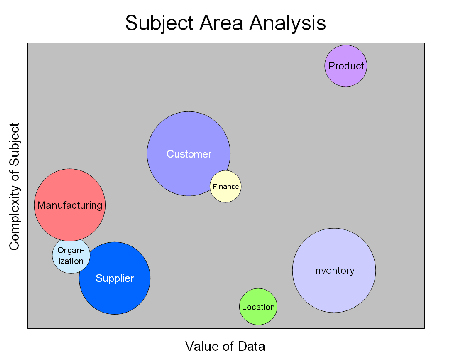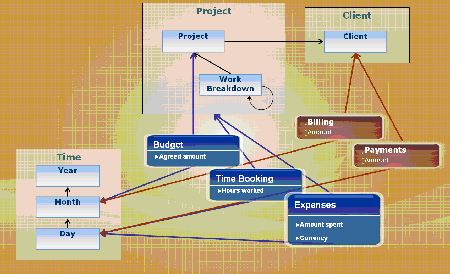Ten Tips for Master Data Management Success
We explore ten things you can do now to prepare your organization for your MDM initiative.
By Cliff Longman
Master data management (MDM) continues to be a hot topic, yet for most people, understanding MDM as an emerging discipline can be a daunting task. It’s easy to become overwhelmed while sifting through vendor information and market “noise” while trying to evaluate the myriad of solutions proclaiming to be MDM.
Too often, MDM programs begin with the analysis of the technology and products available, not the business problem they seek to solve. Before you can successfully evaluate the tools best suited to your organization, you need to understand why you are pursuing MDM. How will it benefit your organization? Where will you start? Who will be involved? How will you deliver and maintain the solution? Once you know these answers, it will simplify your technology selection.
Here are ten things you can do now to prepare your organization for your MDM initiative:
1. Set objectives and success criteria
Set clear goals. This is true for any new technology initiative. A clear definition of success is paramount to avoid misunderstandings. For example, a large consumer packaged goods company achieved millions of dollars of value from their MDM initiative, but their initial goal was to accurately assess brand profitability so they could better structure their brand portfolio. ROI was not in the equation (though it was an obvious benefit). Be clear on your objectives, and set criteria against which you will measure the success of your MDM project.
2. Prepare a business case
The reasons for MDM usually boil down to two simple options: you think the business value will exceed the investment required to deliver a successful program or you believe that it is the right and necessary thing to do. Perhaps surprisingly, companies often use both reasons, though the latter argument generally comes from organizations with strong MDM sponsorship from executives.
Three primary categories of MDM benefits are operational efficiency, better business intelligence, and regulatory compliance.
Operational efficiency includes:
- More accurate business processes (e.g., fewer erroneous deliveries)
- More efficient business processes (e.g., less rework/recovery resulting in faster completion)
- More consistent business processes (e.g., less variation due to media, location, subsidiary, etc.)
Analytic and business intelligence improvements include:
- Visibility across organization/product/customer/channel
- More reliable/trustworthy business intelligence
- More efficient analysis (e.g., less reconciliation of disparate figures)
Compliance benefits include:
- Fewer touch-points for data
- Greater consistency
- More accurate and long-lasting records
One way to expose the benefits in a tangible form is to trace (estimate) the percent of process errors that are due to poor data, then to estimate the savings if the data were consistent and accurate and use this as a statement of benefit. Another way is to expose problems that were caused by poor data, leaving the business case to effectively make itself through opportunities lost, unhappy customers, poor decisions, and so on.
3. Set up a governance process
MDM is not (and will never be) a “plug and play” solution. To get and maintain an acceptable level of data quality and consistency, organizations must carefully manage the process itself.
Conflicts among data from multiple sources must be resolved. Where data will be used for many purposes or will be heavily shared, it’s rare that a single person can resolve the problem; instead, the organization will need to implement an authorization process involving multiple people.
To start, organizations should raise the question of who will be responsible for the accuracy of which pieces of data, and who should be involved in the authorization process (a process that often involves both business and IT).
4. Choose which subject areas to attack first
Most organizations want to manage all their master data. This is an incredibly daunting and unrealistic first step. To identify where to start and how to progress, try a chart like the one in Figure 1 to determine a course of action. It shows complexity versus business value versus volume of data (volume shown as the size of the bubble). High-value, low-complexity, and low-volume subject areas (such as location in Figure 1) are low-risk points to tackle first.
 Figure 1: Map your master data to this chart to help select where to start
Click to enlarge |
5. Conduct a data inventory
Once you have established the best starting point, understand where the data is currently created, modified, and stored. This will give everyone involved a common insight into the scale of the problem. You can do this at a high level by identifying 10 data subject areas as in Figure 1 above or by developing a simple footprint matrix showing systems against subject areas. In the matrix, you can record date creation, use, and modification.
6. Identify executive sponsorship
As with any cross-function or cross-organization initiative, executive sponsorship is critical to success. In many instances, the beneficiary of good master data is different from those who bear the cost of managing it. You may want to use personal review goals, corporate objectives, and even compensation to drive desired behavior. This often requires executive sponsorship to push the initiative through. If executive sponsorship hasn’t been identified, focus on cultivating such a relationship.
7. Identify business champions
MDM initiatives bring the business and IT organizations closer together -- at least they should! To succeed, MDM can’t be seen as an “IT problem,” and the smartest way to bring IT and business together is to identify and leverage business people who are thought leaders.
Conversely, if you are a business champion, you will need to team up with someone who can help deliver IT support – someone that can support the initiative technologically but who understands that technology alone cannot solve the problem.
8. Set up an education and advice forum
As with many new initiatives, you should prepare for a continuous education program to help people understand why good data is important and how to contribute to the project’s success. To begin, events such as brown-bag lunch sessions to introduce the topic, public Webcasts, or independent training events from industry analysts or consultants will help people understand the issues involved and the hurdles to overcome.
9. Educate yourself about products and approaches
Good groundwork and research will pay dividends as your MDM initiative gathers steam. It makes sense, therefore, to use several research avenues, such as Webinars, industry analysts, conferences, community forums, and contacts from other companies in the same or similar industries to gather research material that will help shape the approach you will take. Likely the situations won’t be identical, but best-practice approaches can be gleaned from such interactions.
10. Create a business model of the data to be managed
Ultimately you will need a model (See Figure 2 below) of all your business data to act as a set of formal definitions. Begin by creating an initial “outline model” to help with data inventory and define what is in each subject area. You may also begin to think about the most important business rules that govern your data. Here is where data stewards are invaluable as they will be responsible for ensuring these business rules are adhered to.
 Figure 2: An outline business model for a project management company
Click to enlarge |
MDM is a not only a hot topic but also a new discipline. By following the top ten list, you’ll be well on your way to defining your MDM project scope and thinking about ways to get started that will help your project succeed.
- - -
Cliff Longman is the chief technology officer at Kalido. You can reach the author at [email protected].